-
Highlights of the Louvre Museum
As one of the largest museums in the world, the Louvre can be overwhelming to visit. Over 38,000 treasures are displayed in three wings of the enormous Louvre palace. How long should you spend in the Louvre? Let’s just say if you looked at each thing for a minute it would take years to see it all!
It is a good idea to know what you want to see beforehand, so you can choose the closest entrance and navigate the museum. If you don’t know what there is to see, we have compiled a list of some of the ‘must see’ or ‘not to be missed’ masterpieces.
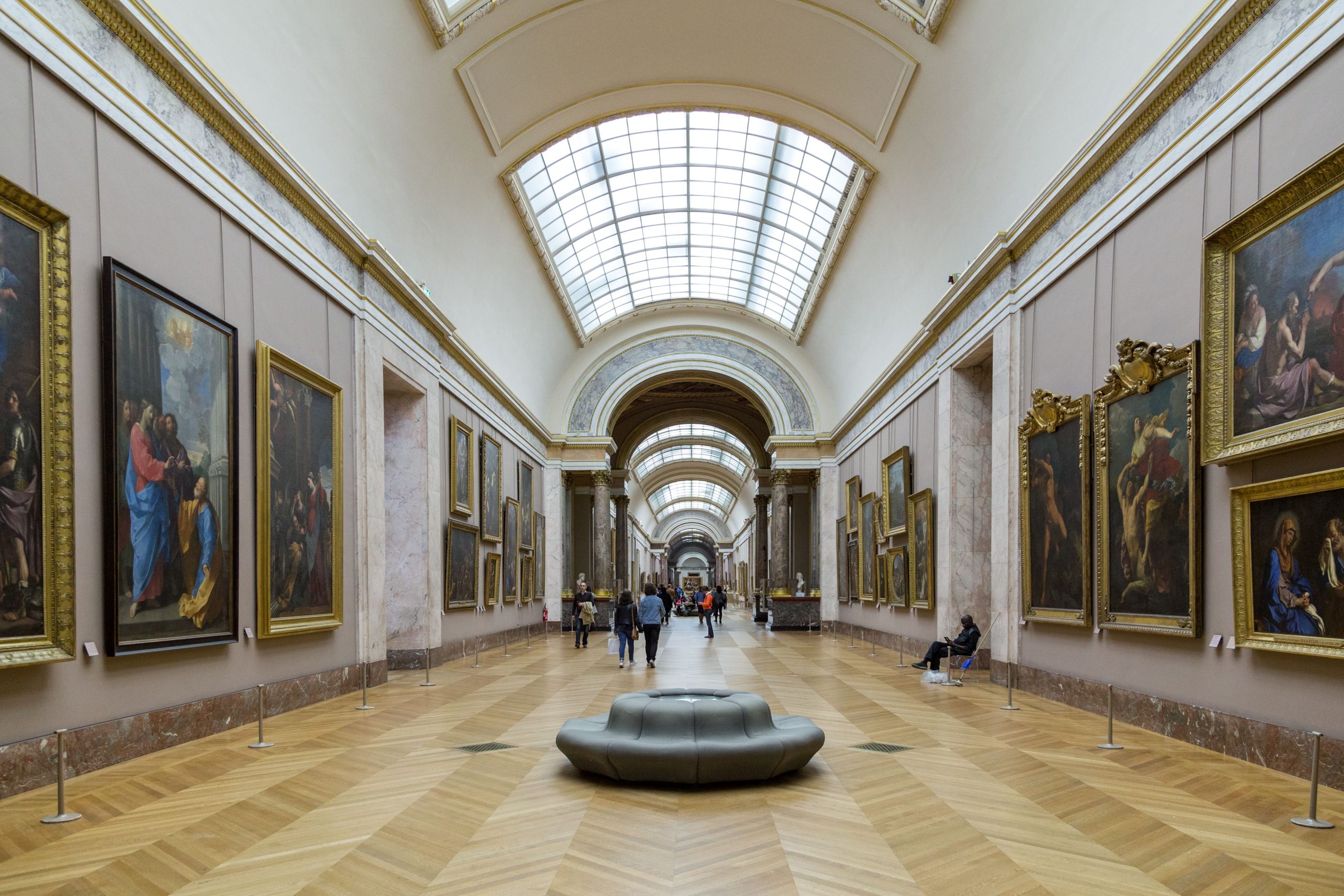
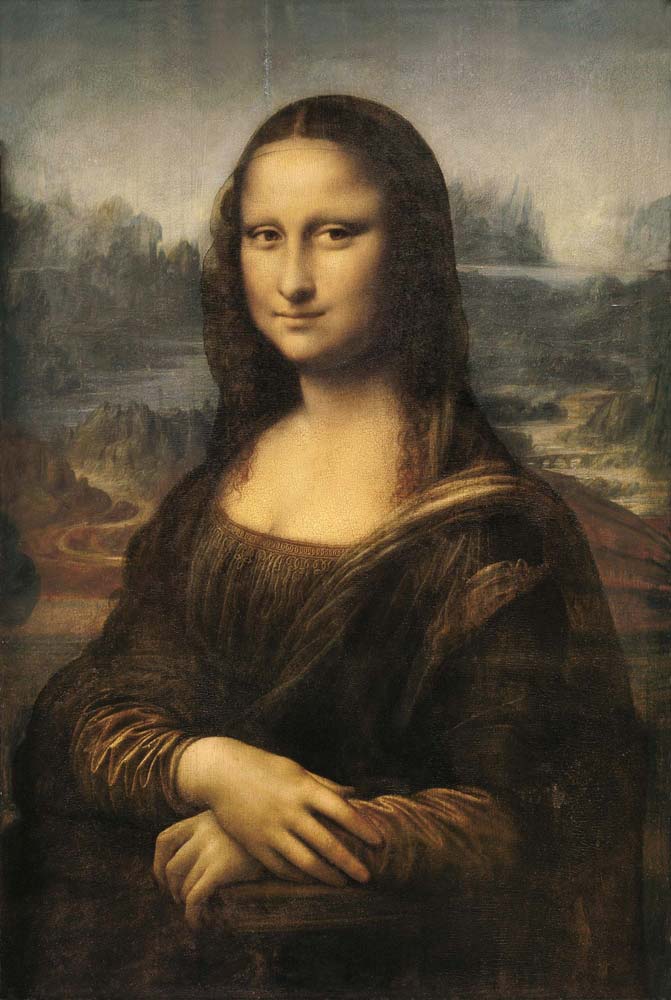
-
Mona Lisa
Undoubtedly the most well-known artwork in the Louvre is the Mona Lisa by Leonardo Da Vinci. Her wistful smile and the mystery surrounding who she was, why it was painted and who it was for makes the painting one of the most intriguing art puzzles of the last five hundred years (see our blog secrets of the Mona Lisa). What is clear, is that Leonardo spent perhaps almost 20 years working on it. It is commonly believed that this one painting represents all of Leonardo’s artistic skill, technique and knowledge, meaning it is true perfection.
You should be aware that it will not be easy to get an audience with Mona Lisa, as you can see from the photo, the painting is quite small and she is protected by bulletproof glass and a barrier; so, getting close to her is a challenge. (Denon wing, Level 1, Room 711)
-
The Wedding Feast at Cana
If you are somewhat underwhelmed by the size of the Mona Lisa, Veronese’s 6-metre by 10-metre canvas is immense, possibly the largest painting in the Louvre. Paolo Caliari (known as Véronèse) painted Les Noces de Cana in 1563 for the Benedictine Monastery San Giorgio Maggiore in Venice to decorate the refectory. The subject is fitting with a lively feast, guests sat around a table outside, surrounded by revelry and musicians. The biblical story of a wedding at Cana in Galilee, is when Jesus miraculously turned water into wine.
The painting has over a hundred figures enjoying the festivities, the bride and groom are to the left, Christ sits in the middle of the table, surrounded by the apostles. The figures are dressed in colourful eastern finery yet with contemporary Venetian faces. Despite its size, it is fantastically detailed from the food on the plates and embroidery on the tunics, to the animals playfully intermingling with the guests. (Denon Wing, Level 1, Room 711)
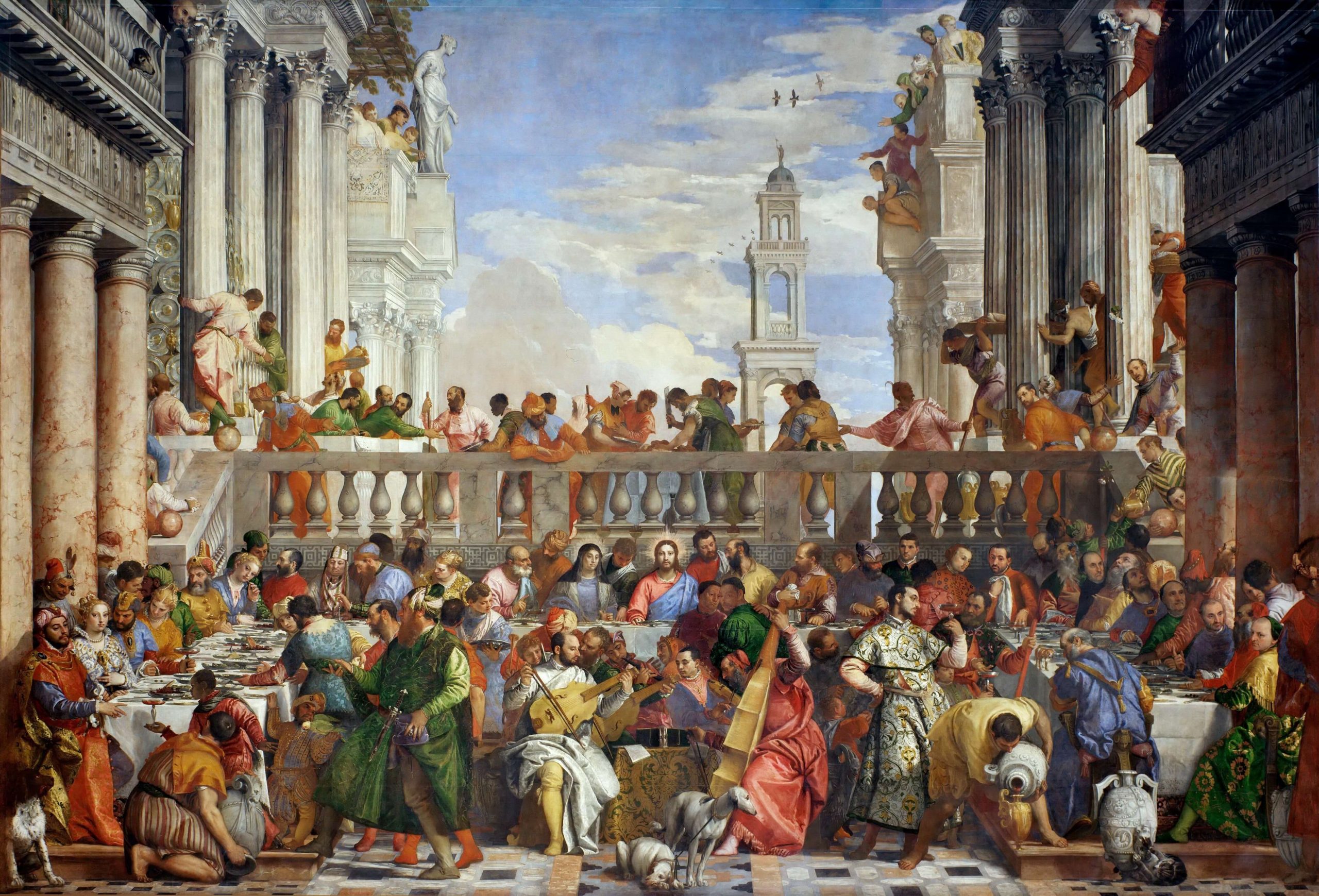

-
Liberty Leading the People
One of the newer pieces on our ‘must see’ list by French painter Eugene Delacroix is of great cultural importance. Liberty leading the People is a romanticised depiction of the Parisian uprising against Charles X during the French Revolution. Liberty is depicted as a bare-breasted woman, strong and determined, rousing the people forward holding a French flag in one hand, an infantry gun in the other. It’s almost a classical scene with her shirt hanging off one shoulder, bathed in a light that emanates from the smoke of war. It was a patriotic piece for Delacroix, who believed passionately in the Republican cause. (Denon Wing, Level 1, Room 700)
-
Venus De Milo
This beautiful sculpture of Aphrodite (Venus) in Greek Parian marble was found on the island of Milos in 1820. The statue is larger than life size at 204 cm (6 ft 8 in) high and despite missing both arms, is in excellent condition. It’s a beautiful example of the Hellenistic period perhaps dating to the 2nd century BC, without the inscription on the plinth we cannot be certain.
She has been named Aphrodite or Venus due to the delicate features, her pose and draped covering. It was discovered in two pieces, with an inscribed plinth, fragments of the upper left arm and left hand holding an apple. These attributes would traditionally make her ‘Venus Venetrix’ but the fragments have long disappeared.
Today the Venus De Milo is as famous as the Laocoön at the Vatican and the Venus de Medici in the Uffizi, which is thanks to French propaganda of the 19th century. These two works were temporarily at the Louvre thanks to Napoleon’s looting, but were returned after his reign, leaving the Louvre and French art culture bereft. The newly acquired Venus, filled the gap and a huge PR campaign would raise the statue’s status to one of the Louvre’s Top Ten Masterpieces. (Sully Wing, room 334)
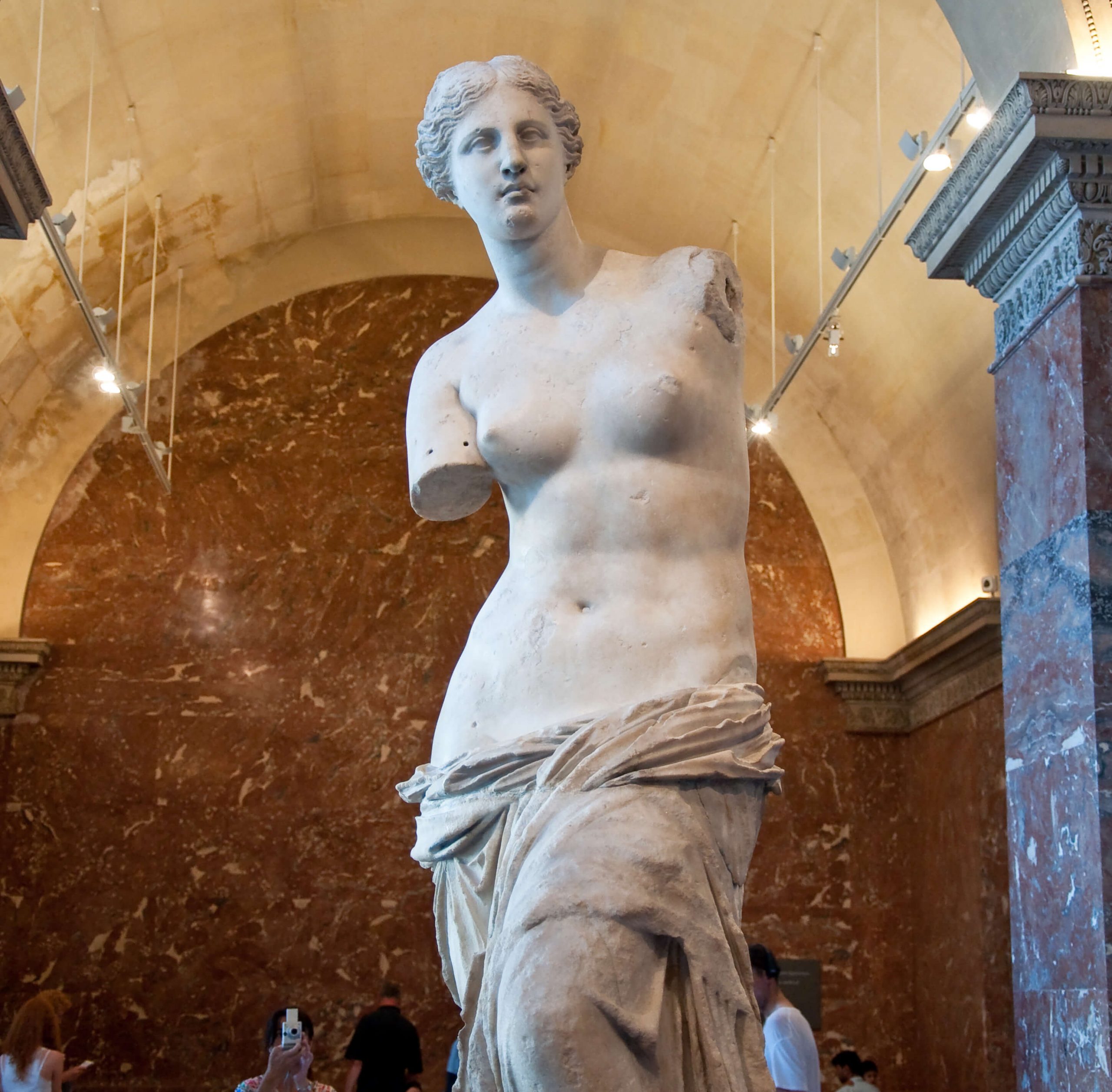
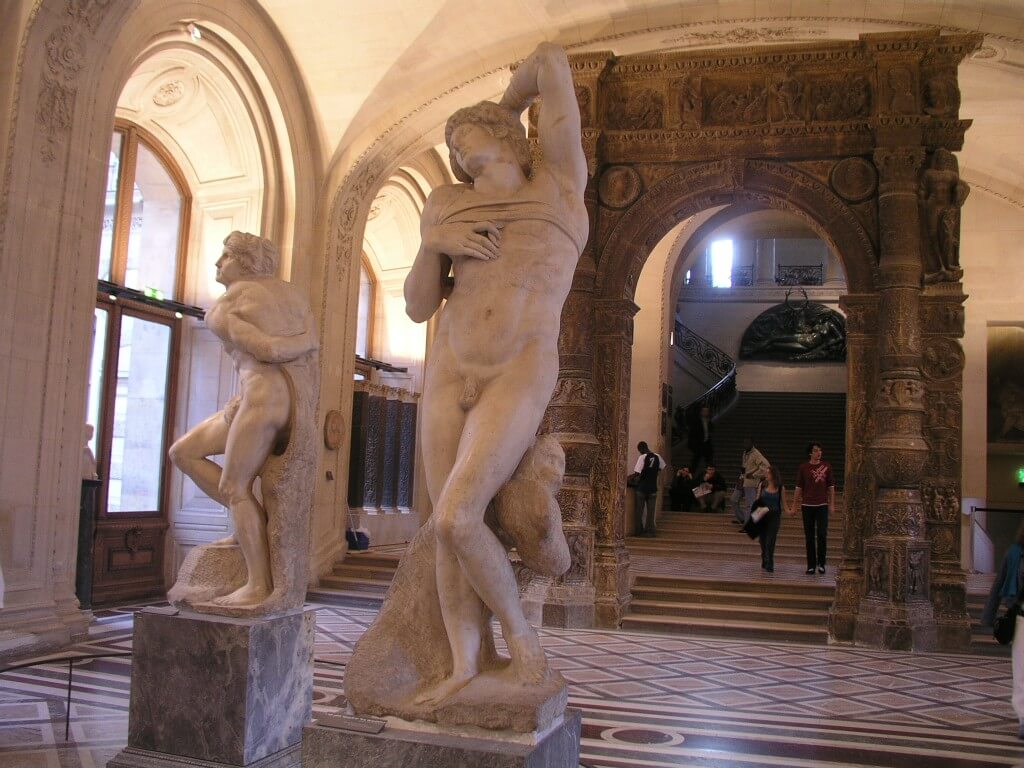
-
Captive Sculptures
Two of a series of sculptures by Michelangelo can be found at the Louvre. The Dying Slave and The Rebellious Slave were sculpted in 1513 as part of a monumental tomb designed for Pope Julius II, intended for St Peter’s Basilica in Rome. There are four more of these statues at the Galleria dell’ Accademia in Florence, although they are unfinished. The tomb was never completed and these two pieces were given by Michelangelo to a friend Roberto Strozzi, who eventually fled Florence for France. In turn he gave the slaves to King Francis I.
The two figures are of chained, nude, men; the names attributed to the statues denote their demeanour. Dying Slave depicts a young, handsome, man who seems to be sleeping serenely. The Rebellious Slave strains against his chains as if trying to violently break free. With their characteristic twisted torsos and beautifully rendered facial features; both statues show Michelangelo’s precise knowledge of human anatomy and uncanny ability to create such life-like forms out of stone. Michelangelo, however, claimed he simply released his figures from the stone rather than being their creator.
-
Winged Victory of Samothrace
This beautiful statue of a winged woman is the Greek goddess Victory or Nike. She is truly breath-taking, perched in her own space on a grand staircase conceived partly with the statue in mind. Exquisitely carved, in flawless, Parian marble, the goddess stands on the prow of a ship, her thin tunic and wings fluttering in the wind. She was no doubt created to celebrate a great naval battle; we just don’t know which one.
The statue was discovered on the island of Samothrace at the sanctuary of the great gods, by Charles Champoiseau of the French consulate in Turkey. Found in over 100 pieces, with head and arms missing, she was painstakingly reassembled at the Louvre. Further excavations over 10 years later uncovered darker marble blocks, which formed a piece of a ship. The statue has undergone restoration many times since with lost pieces added (or reconstructed). Trying to establish a date is difficult, the workmanship is Hellenistic with most scholars dating it to the early 2nd century BC. (Daru staircase, Denon wing, Level 1)
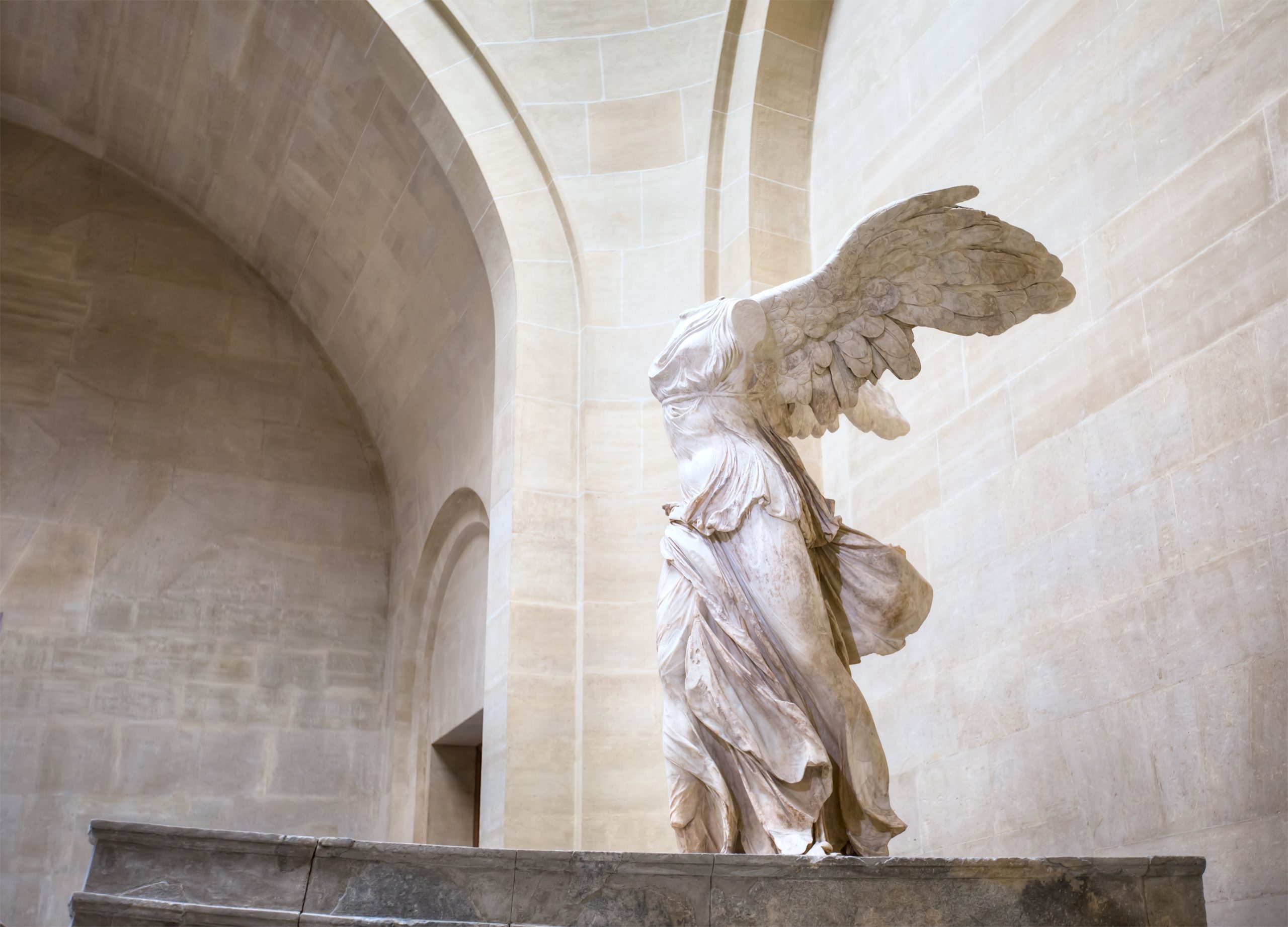
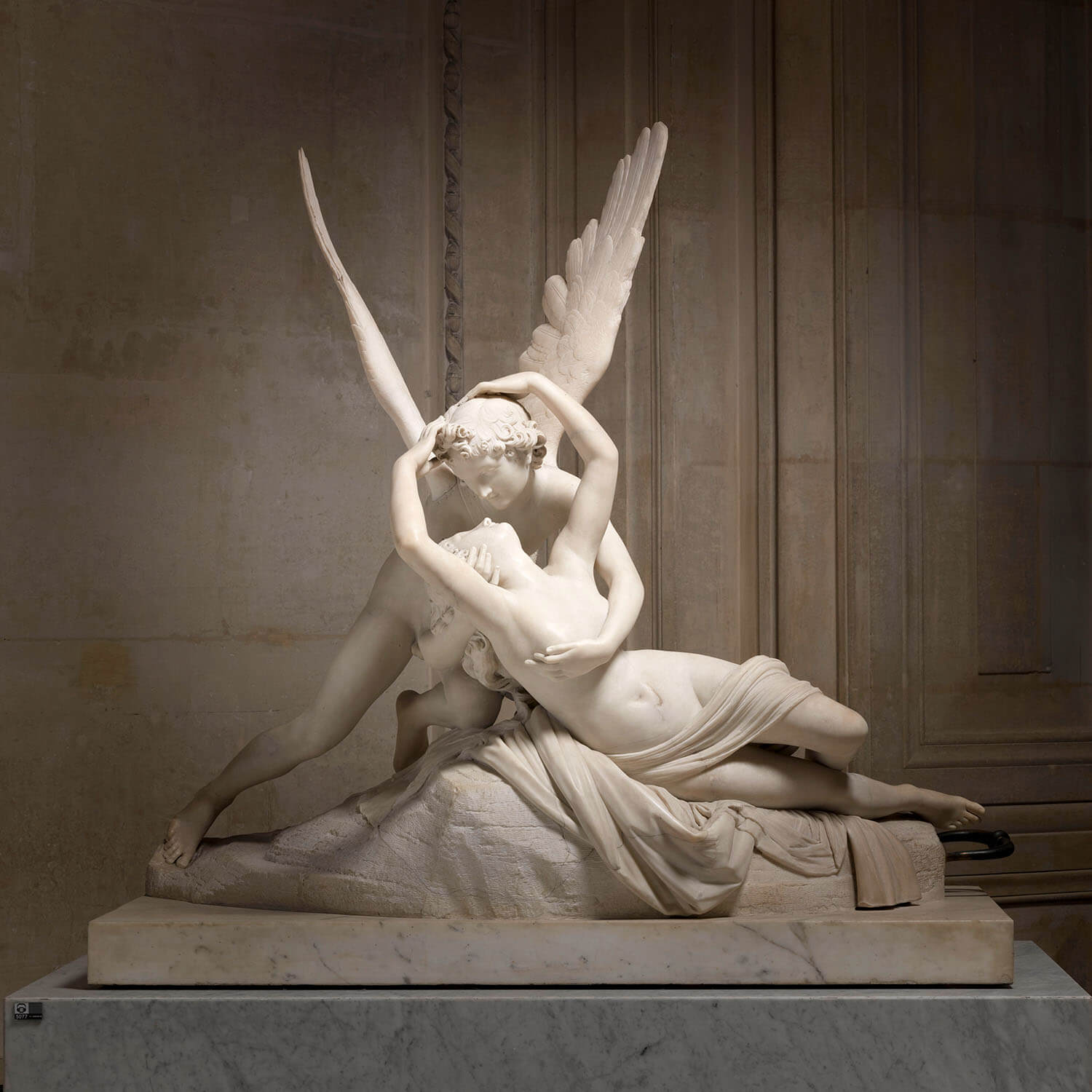
-
Cupid and Psyche Antonio Canova
‘Psyche Revived by the Kiss of Love’ is one of the many mythological pieces by the Italian sculptor Antonio Canova. The beautifully tender couple are cupid and psyche, the story is from Ovid’s metamorphoses. Canova has captured the moment cupid wakes his love from a potion-induced sleep with a tender kiss.
Typical of Neoclassical sculpture it is full of emotion and romantic sentiment in the way Psyche wakes up an embraces Cupid from below.
The workmanship is so precise – the feathers on Cupid’s wings, Psyche’s belly button and slender toes. It is these fine details that render the statue lifelike. The anatomical detail of their bodies in movement is spectacular; Cupid’s leg as he bends down, Psyche’s twisted position showing the grace of her neck, the curve of her hips. We may be forgiven for thinking this is flesh, not marble! (Denon Wing, Room 403)